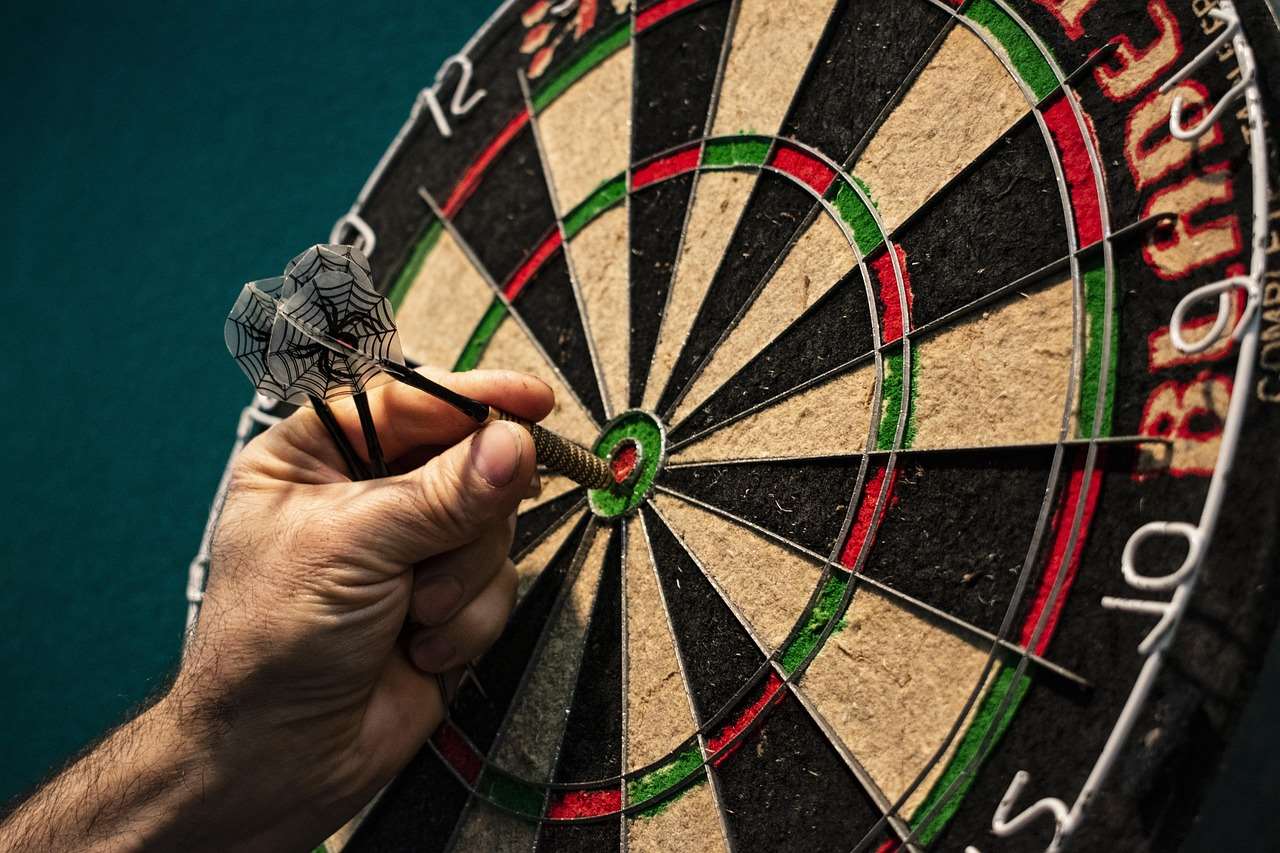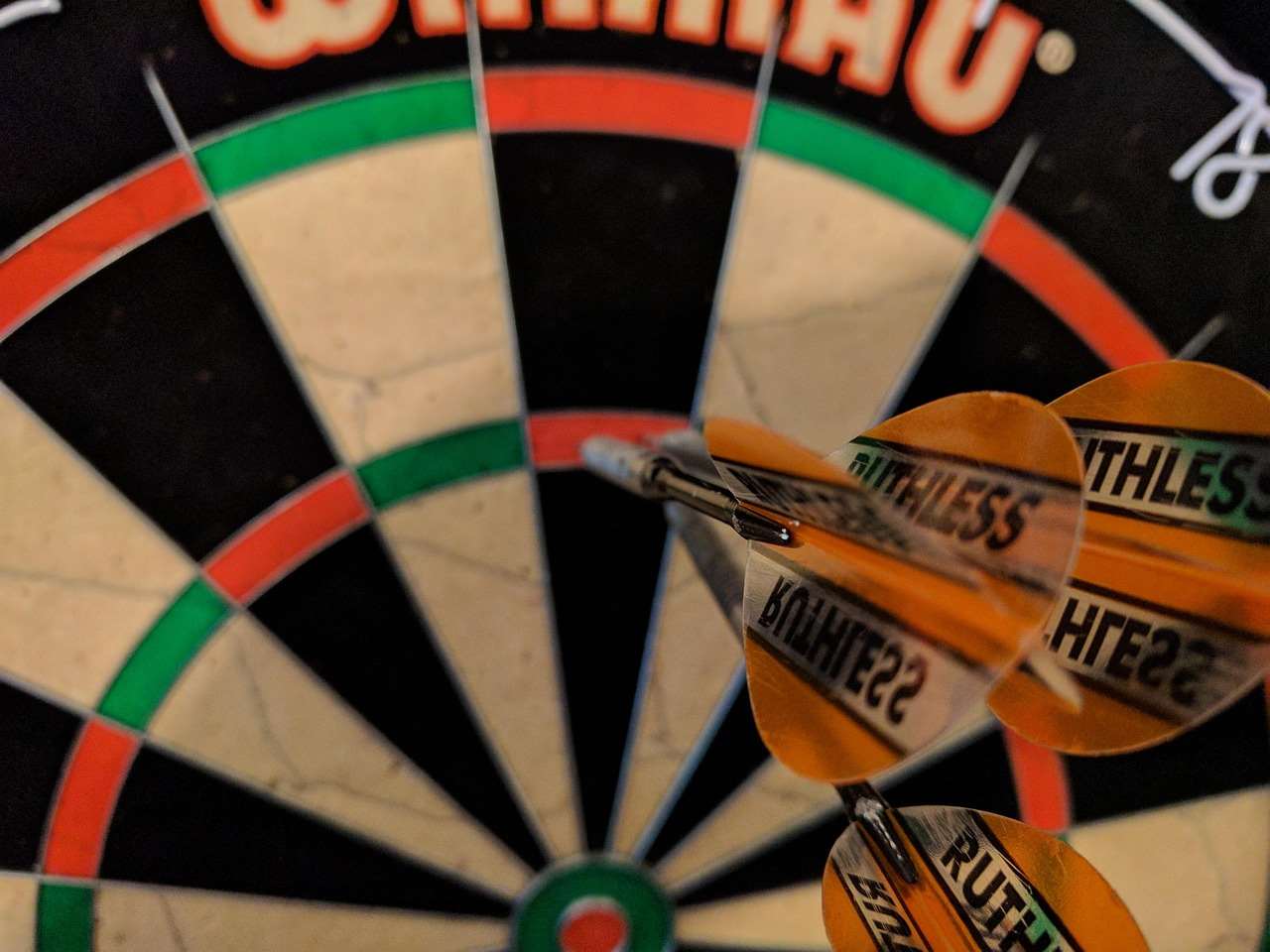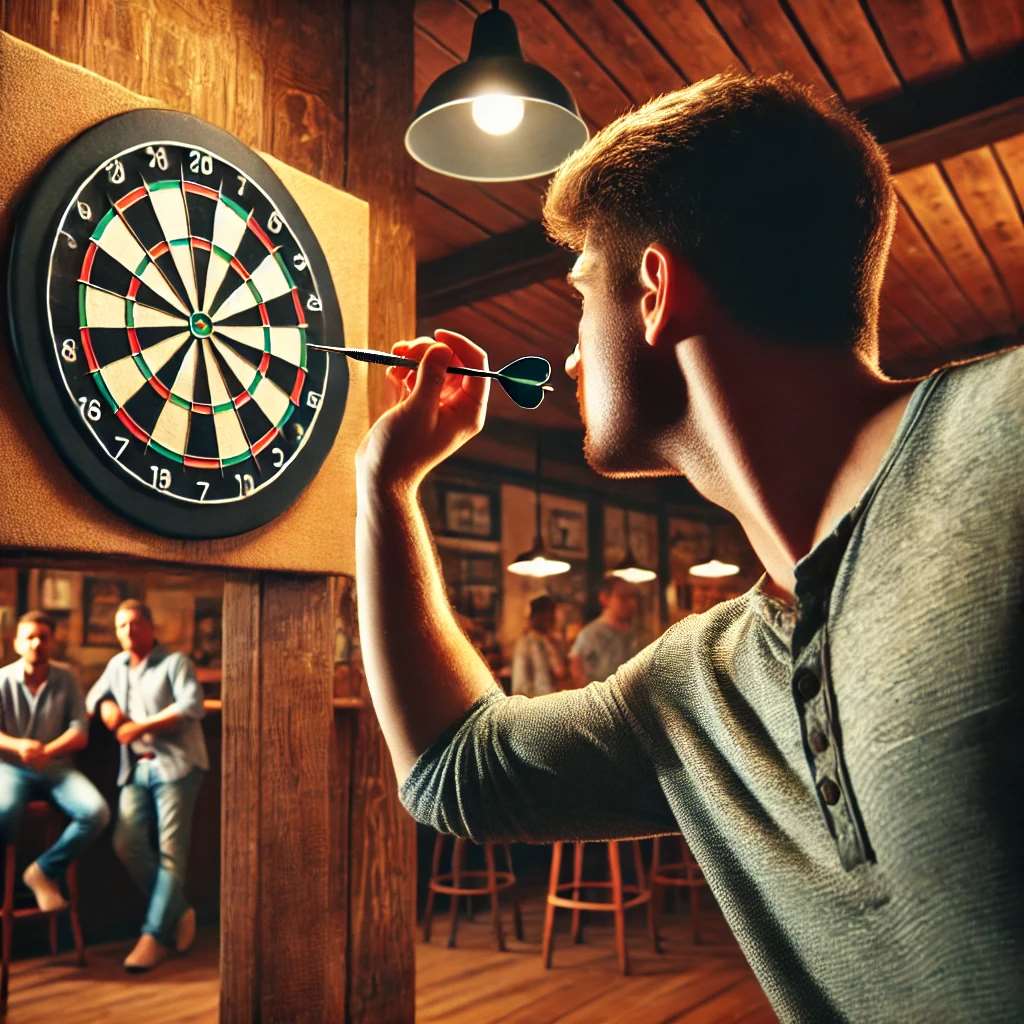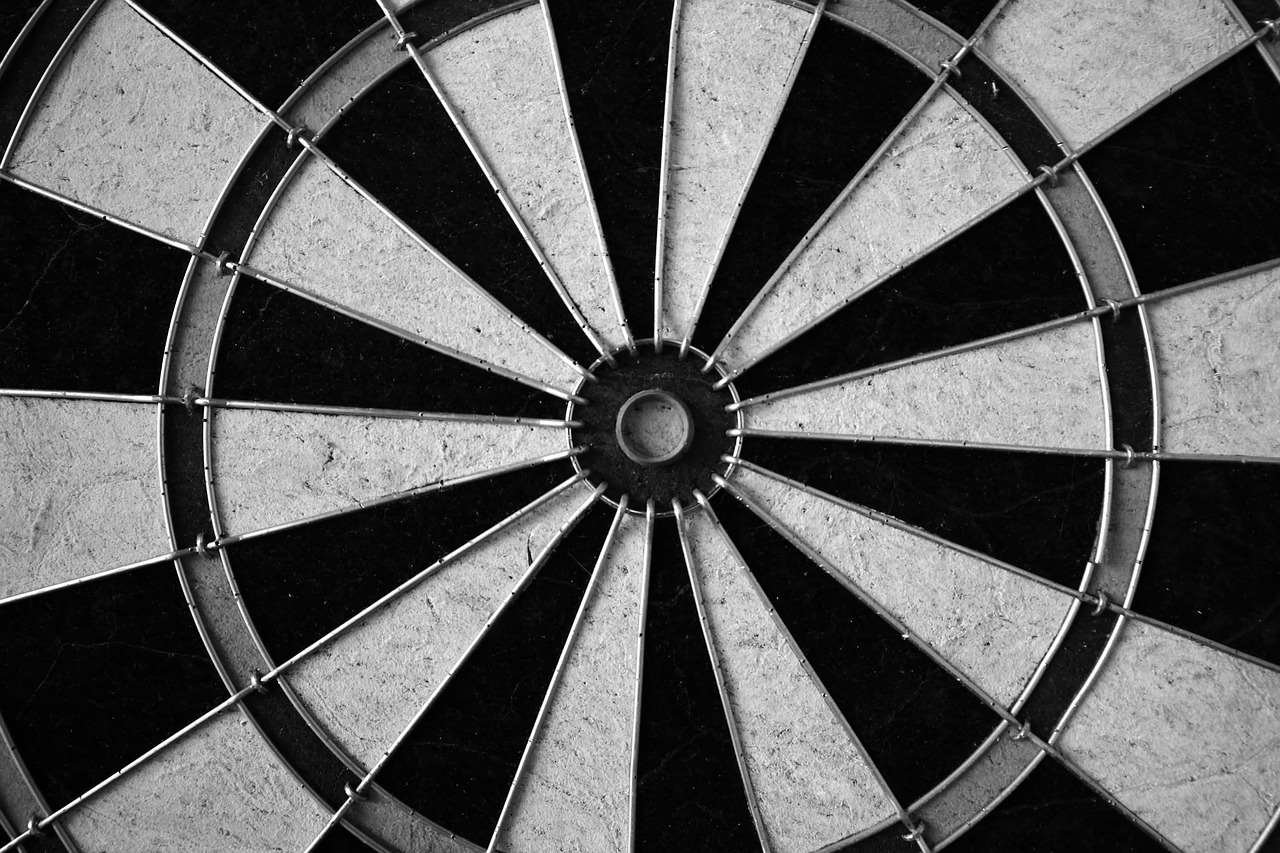Understanding the relationship between dart shaft material and flight angle is crucial for optimizing your dart throw and improving your game. The right combination can significantly impact your accuracy and consistency. This article will explore the various shaft materials, how they influence flight, and provide tips for selecting the perfect setup for your style.
⚠️ Still Using Pen & Paper (or a Chalkboard)?! ⚠️
Step into the future! The Dart Counter App handles all the scoring, suggests checkouts, and tracks your stats automatically. It's easier than you think!
Try the Smart Dart Counter App FREE!Ready for an upgrade? Click above!
Choosing the correct shaft material is paramount, as it directly impacts the flight characteristics of your dart. Different materials offer unique properties, from flexibility and weight to durability and overall feel.
Furthermore, understanding how flight angle interacts with shaft material can refine your throwing technique. The interplay of these two elements is key to achieving optimal dart trajectory and minimizing unwanted movement.
Dart Shaft Material and Flight Angle: A Deep Dive
The impact of dart shaft material and flight angle on your game is often underestimated. Let’s break down the different aspects to help you understand and optimize your setup.

Understanding Dart Shaft Materials
Several materials are used for dart shafts, each with its strengths and weaknesses: Nylon is a common choice, offering good durability and flexibility at an affordable price. Aluminum shafts are lighter and stiffer, providing a more consistent flight but can be more prone to bending. Carbon fiber shafts are the lightest and stiffest option, offering exceptional performance but at a higher price point. Finally, polyester shafts combine some of the benefits of nylon and aluminum, providing a good balance between durability, flexibility and stiffness. The choice depends on individual preferences and playing style.
The weight of the shaft also plays a vital role in the overall balance and flight of your dart. A heavier shaft can contribute to a more stable flight, especially for players with a powerful throw. Conversely, a lighter shaft will enhance maneuverability. Consider experimenting with different shaft weights to discover what works best for you. This often goes hand-in-hand with the shaft material.
The Significance of Flight Angle
Flight angle refers to the angle at which your flights are positioned relative to the shaft and dart barrel. A properly angled flight ensures a consistent and stable flight path, reducing wobble and drift. Incorrect angles can lead to inaccuracies, and it is a frequent culprit in poor dart performance. Experimenting with flight angles is a must to discover what is ideal for your dart, throw, and style. Darts Equipment Maintenance Customization will provide you with information on how to correctly change and adjust your flights.
The Interplay Between Shaft Material and Flight Angle
The relationship between dart shaft material and flight angle is synergistic. For example, a flexible nylon shaft might require a slightly shallower flight angle to compensate for its tendency to bend during the throw. Conversely, a stiffer aluminum or carbon fiber shaft might allow for a steeper flight angle, maximizing stability. The correct flight angle for you may depend on the dart shaft material. Therefore, understanding the characteristics of your chosen material is crucial to optimize your flight angle.

Optimizing Your Dart Setup: Practical Tips
Finding the optimal dart shaft material and flight angle requires experimentation. Start by selecting a shaft material based on your throwing style and preferences. If you throw with a lot of power, a stiffer shaft might be preferable, while a lighter, more flexible shaft might suit a softer throw. Once you’ve chosen a shaft, experiment with different flight angles to find the most stable and accurate trajectory. Begin with a standard angle and subtly adjust from there.
- Start with standard angles: Most flights are designed for a standard angle; altering this angle too significantly will introduce potential problems.
- Consider your throwing style: A more powerful throw might benefit from a slightly different angle than a softer, more controlled throw.
- Test and refine: There’s no one-size-fits-all solution. Practice with different combinations and note your results.
- Pay attention to feedback: Do your darts wobble or drift? This is a clear sign that you need to adjust your flight angle or potentially even your shaft material. You can also consider utilizing resources available online such as Dart equipment troubleshooting recommendations online.
Remember, the goal is to find a combination that provides maximum stability and consistency. Be patient and methodical in your experimentation. This may be an ongoing process, as your technique and preferred setup might change over time.
Experimentation is key. You can discover a lot of information online. For example, you may want to explore options such as custom dart shafts bulk to fully optimize your experience.
Common Mistakes to Avoid
Many players make common mistakes when selecting their dart shaft material and flight angle. One frequent mistake is neglecting to consider the interaction between the two. Another is assuming a “one size fits all” approach. Your preferences might shift depending on the type of game you’re playing. Failing to adequately experiment to find your sweet spot is another common error.

Finally, not paying attention to the overall balance of the dart is a critical oversight. The shaft and flights should work together with the dart barrel to create a balanced and stable system. Using the wrong weight or too much variation between components can negatively impact your performance.
Troubleshooting Tips
If you’re experiencing inconsistent throws, start by evaluating your current setup. Consider experimenting with different shaft materials or flight angles. Are your darts drifting? Is there excessive wobble? These can both be indicators of a problem with your current configuration. You could also try utilizing online guides and tutorials, like Sisal board repair guide online, to learn more about your setup.
If adjusting your shaft and flights doesn’t solve the issue, consider other factors that might be affecting your throw, such as your grip, stance, or throwing motion. Remember, consistent practice is just as important as having the right equipment. Sometimes, the best solution to a problem is as simple as regular practice and consistent effort.
Beyond the Basics: Advanced Considerations
For advanced players, finer nuances of dart shaft material and flight angle become increasingly important. Things like the stiffness of the shaft, the weight of the flights, and the overall balance of the dart become key areas of optimization. This is also where an awareness of your own unique throwing style becomes crucial. While the basic principles discussed earlier still apply, fine-tuning becomes more essential.

Experimenting with different combinations and tracking the results provides the best way to improve in the long run. Keeping a record of what works, and what doesn’t, can provide key insights into your individual needs and preferences. For example, perhaps you’ll find a preference for lighter, more flexible shafts with a specific type of flight. The key is to stay organized and maintain records of your findings.
Finally, consider factors such as the type of dartboard you use. A dartboard wire and number model may require a different approach than a sisal board. The dartboard’s material influences how your dart will react upon impact.
Maintaining Your Darts
Proper maintenance of your darts is essential to ensure optimal performance and longevity. Regularly inspect your shafts for any signs of damage or wear and tear. Replace any damaged shafts promptly to maintain consistency. If the shafts are damaged, your dart shaft material and flight angle can become misaligned, leading to poor performance. Similarly, worn-out flights can impact accuracy and stability. Always replace worn or damaged parts to avoid impacting your performance. Consider flight protector recommendations to help extend the life of your flights.

Regular cleaning of your darts can also prevent dirt and debris from interfering with their performance. Remember, taking good care of your darts will extend their lifespan and maintain accuracy and consistency.
In addition, you can also explore options for repairing dartboard from impact tutorial or Sisal board repair options, if needed. A damaged dartboard can directly impact your game and its accuracy.
Choosing the right rotating dartboard for home use also plays an important role in optimizing your setup and your overall experience.
Conclusion
Mastering the relationship between dart shaft material and flight angle is a continuous journey of experimentation and refinement. By understanding the properties of different shaft materials and the impact of flight angle, you can significantly enhance your accuracy, consistency, and overall dart-throwing performance. Remember, the optimal setup is unique to each individual. Take the time to experiment, analyze your results, and discover the perfect combination for your unique throwing style. Don’t be afraid to experiment, and keep practicing! A good starting point is to read online guides about dart sharpening protocol and consider the potential for changing dartboard numbers to optimize your setup and dart-throwing experience.
Hi, I’m Dieter, and I created Dartcounter (Dartcounterapp.com). My motivation wasn’t being a darts expert – quite the opposite! When I first started playing, I loved the game but found keeping accurate scores and tracking stats difficult and distracting.
I figured I couldn’t be the only one struggling with this. So, I decided to build a solution: an easy-to-use application that everyone, no matter their experience level, could use to manage scoring effortlessly.
My goal for Dartcounter was simple: let the app handle the numbers – the scoring, the averages, the stats, even checkout suggestions – so players could focus purely on their throw and enjoying the game. It began as a way to solve my own beginner’s problem, and I’m thrilled it has grown into a helpful tool for the wider darts community.